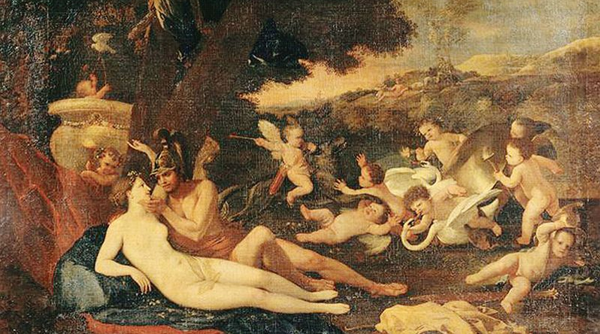
Mars and Venus was well-known to Nicolas Poussin scholars. But for more than a century, the oil on canvas was considered either a fake or a poor attempt by the French painter’s studio to imitate the style of the classicist master. It barely left the Louvre’s stock room.
Now new research led by Pierre Rosenberg, the director of the Louvre from 1994 to 2001, proves that Mars and Venus is indeed the real thing–a discovery which makes it the 40th Poussin in the institution’s collection. The Figaro reports that under the piece’s darkened varnish, the conservation team in charge of a recent analysis discovered that the top of the canvas had been cut off, and the removed strips used to enlarge the piece horizontally.
“Its original, much squarer format, is very much in the spirit of Poussin’s composition,” said Rosenberg. Picturing the ancient gods frolicking in a pastoral setting, Mars and Venus is erotically charged, a characteristic of the artist’s earlier years. “With irony and humor, Poussin tackles an openly risqué topic,” continued the art historian, “and we now know that the young Poussin, during his early Roman years, wasn’t the severe and austere painter of the 1640s and 1650s.”
The piece will be included in the artist’s new catalogue raisonné, to be published in 2016. It will also be presented in a large Poussin exhibition at the Louvre. Slated for spring 2015, the show will mark the 350th anniversary of the artist’s death.